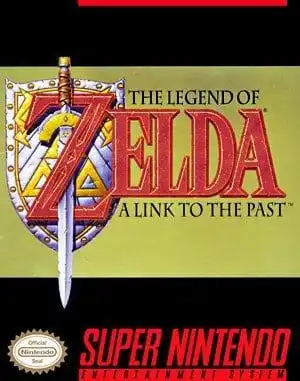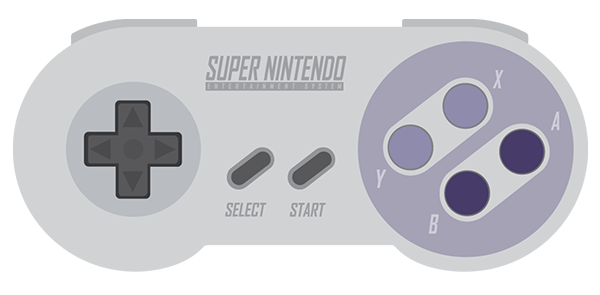Remember that feeling? The chill down your spine as the rain poured, the desperate plea from Princess Zelda, and the call to adventure pulling you from your warm bed? For a generation of gamers, that was the unforgettable beginning of The Legend of Zelda: A Link to the Past. Released on the Super Nintendo Entertainment System (SNES), this game wasn't just a sequel; it was a revolution, setting the gold standard for action-adventure games and becoming the foundational blueprint for the entire Zelda series that followed.
But in an era of sprawling 3D worlds and complex mechanics, why does this 16-bit gem still hold such a powerful grip on our hearts and gaming libraries? Let's dust off that Master Sword and explore the pixelated magic that makes A Link to the Past an absolute must-play, even today.
The Legend Begins (Again): Stepping Back into Hyrule
Following the experimental Zelda II: The Adventure of Link, The Legend of Zelda: A Link to the Past felt like a triumphant return to the top-down perspective of the original, but supercharged by the SNES hardware. Everything was bigger, brighter, and more detailed. Hyrule felt truly expansive, filled with secrets waiting behind every waterfall and under every bush.
This game didn't just refine the formula; it perfected it for the 2D realm. It took the core ideas of exploration, puzzle-solving, and combat from the NES classic and polished them to a mirror sheen, adding layers of depth that felt truly groundbreaking at the time.
More Than Just Two Worlds: The Innovation That Changed Everything
While ALttP introduced many series staples (the Hookshot, the Spin Attack, Pieces of Heart!), its most iconic and influential innovation was undoubtedly the Light World and Dark World mechanic. This wasn't just a simple palette swap; it was a complete parallel dimension, a twisted reflection of Hyrule where the landscape was altered, enemies were different, and puzzles required clever traversal between realities.
This dual-world system doubled the effective size of the map and introduced complex environmental puzzles that required you to observe how actions in one world affected the other. It was a stroke of genius that added incredible depth and became a recurring theme in future Zelda titles.
The Blueprint: How ALttP Shaped Modern Zelda
Think about your favorite moments in Ocarina of Time, Twilight Princess, or even Breath of the Wild. Chances are, many of the core design principles can be traced directly back to A Link to the Past:
- Dungeon Structure: Find a key item within the dungeon that's essential to completing it and defeating the boss. This forces you to master new tools immediately – a classic Zelda loop!
- Guided Introduction: Unlike the sometimes cryptic beginnings of the NES games, ALttP had a more structured opening that eased players into the mechanics and the world.
- Visual Puzzle Cues: The game provided clearer visual hints for where to use items (cracked walls for bombs, specific posts for the Hookshot), reducing frustrating guesswork.
- Rewarding Exploration: Hidden heart pieces, secret grottoes, and optional upgrades made wandering off the beaten path incredibly satisfying.
The Legend of Zelda: A Link to the Past didn't just build on its predecessors; it laid the groundwork for everything that came after. Playing it today feels less like visiting an ancient relic and more like experiencing the foundational text of a beloved series.
Still Worth Playing? Absolutely.
Beyond its historical significance, A Link to the Past simply holds up as a fantastic game. The controls are tight, the combat is satisfying (dat Spin Attack!), the music is iconic, and the pacing is near-perfect. It offers a substantial adventure without the sometimes overwhelming scale of modern open-world games.
The puzzles are challenging but fair, the world is a joy to explore, and the sense of progression as you gain new items and abilities feels incredibly rewarding. Whether you played it back in the day or are coming to it fresh after Tears of the Kingdom, the magic is undeniable.
Where Can You Play It Today?
Good news, hero! You don't need a dusty old SNES to experience this masterpiece. Nintendo has made The Legend of Zelda: A Link to the Past available on several modern platforms:
- Nintendo Switch Online: Available as part of the Super Nintendo library for subscribers.
- SNES Classic Edition: Included on this miniature retro console.
- Virtual Console: Previously available on Wii, Wii U, and 3DS eShops (though these stores are now closed, if you bought it digitally, you can still play).
- Game Boy Advance: Released as A Link to the Past and Four Swords, featuring some minor changes and the multiplayer mode.
Pick your platform and prepare for an epic journey!
FAQ
- Is The Legend of Zelda: A Link to the Past the first Zelda game? No, the first game was The Legend of Zelda released on the NES in 1987. A Link to the Past is the third main installment.
- Is ALttP considered one of the best Zelda games? Absolutely! It's consistently ranked among the top games in the series and often cited as one of the greatest video games of all time.
- Is it hard to get into if I've only played 3D Zelda games? Not at all! While the perspective is different, the core gameplay loop of exploring, finding items, and solving dungeon puzzles will feel very familiar, as ALttP established many of those concepts.
- How long does it take to beat A Link to the Past? For a first-time player focusing on the main story, it typically takes around 12-15 hours. Completionists looking for all the secrets might spend 20-25 hours or more.
The Enduring Legacy
The Legend of Zelda: A Link to the Past isn't just a nostalgic trip; it's a vital piece of gaming history that remains incredibly fun and playable today. Its innovations were so profound that they continue to influence game design decades later. If you've never played it, you owe it to yourself to experience the game that defined an era and shaped the destiny of Hyrule. Grab your sword, shield, and maybe a helpful Flute – adventure awaits!


